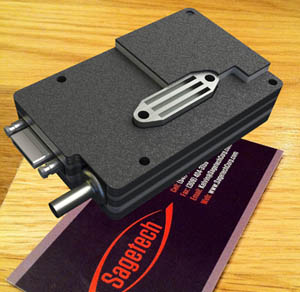Many might already know that congress recently signed the Federal Aviation Administration Re-authorization Act, which orders the FAA to make way for drones in the National Airspace System (NAS) by 2015.
It seems that the rules will remain the same for recreational drones flying below 400 feet (which constitutes the vast majority of activity on this site). But for those seeking higher altitude, it's likely that your drone will need some kind of "sense and avoid technology."
From the bill, H.R. 658:
SEC. 322. CIVIL UNMANNED AIRCRAFT SYSTEMS INTEGRATION PLAN.
(a) Integration Plan-
(2) MINIMUM REQUIREMENTS- In developing the plan under paragraph (1), the Secretary shall, at a minimum--
(A) review technologies and research that will assist in facilitating the safe integration of civil unmanned aircraft systems into the national airspace system;
(B) provide recommendations or projections for the rulemaking to be conducted under subsection (b)--
(i) to define the acceptable standards for operations and certification of civil unmanned aircraft systems;
(ii) to ensure that civil unmanned aircraft systems include a sense and avoid capability, if necessary for safety purposes;
(iii) to develop standards and requirements for unmanned aircraft systems sense and avoid performance; and
(iv) to develop standards and requirements fo
r the operator and pilot of a commercial unmanned aircraft system, including standards and requirements for registration and licensing;
To create a small Unmanned Aerial System (sUAS) with sense and avoid technology, you need to make sure that the equipment is small. sUASNews.com recently made a post about the world's smallest FAA-spec transponder. It measures 3.5" x 1.8" x 0.7", and weighs about 100g - which is 30 percent lighter than an iPhone.
The transponder is based on Automatic Dependent Surveillance-Broadcast (ADS-B) technology, which compliments the FAA's switch to the GPS-oriented "NextGen" system. All aircraft in the NAS must be equipped with ADS-B transponders by 2020.
It runs on 10-32V, and consumes about 8 watts during normal operation. Not sure about the cost, but I'm attaching a nifty PDF with more info about the device.Sagetech-XP-Family-Transponder-Brochure-v3.1.pdf

Comments
While flying a real plane under VFR it should do turn clearance maneuvers to assure other planes will not conflict while testing a stall, etc.. Instruments have to be trusted with IFR. I hope by 2020 some flying won't be too close :-)
Marc, thank you for the clarification. Noted.
The situation is a lot murkier than it might seem at first glance. First, it is not true that "all aircraft in the NAS must be equipped with ADS-B transponders by 2020." ADS-B out will only be required for aircraft that were certified with engine driven electrical systems, flying in Class A, B, C airspace, or above 10,000 ft MSL. That leaves out balloons, gliders, ultralights, some vintage powered aircraft, many agricultural aircraft, etc.
Second, the transponder you linked to above is actually a Mode C and S transponder with supplemental ADS-B out capability. In order to legally implement ADS-B out using this unit, the aircraft must also be equipped with a TSO'd GPS system, yet another expensive box.
In general, use of transponders or ADS-B in/out capability will not be adequate to implement sense and avoid, either now or after 2020. The FAA has been sitting on its hands for over a decade in terms of allowing certification of low power and cost VFR-only ADS-B transmitters, which might well have led to a workable solution for equipping ALL aircraft. Their focus has been solely on the needs of IFR users. There is also the issue of the incompatible UAT and 1090ES ADS-B variations in areas (particularly at low altitudes in mountainous areas) with inadequate ground station coverage. And, the icing on the cake is that present ADS-B technology is easily spoofed, which has led to a continued requirement for traditional Mode C/S transponders, and continued use of secondary surveillance radar, after 2020.
Any viable sense and avoid system will need to be based on some other technology...